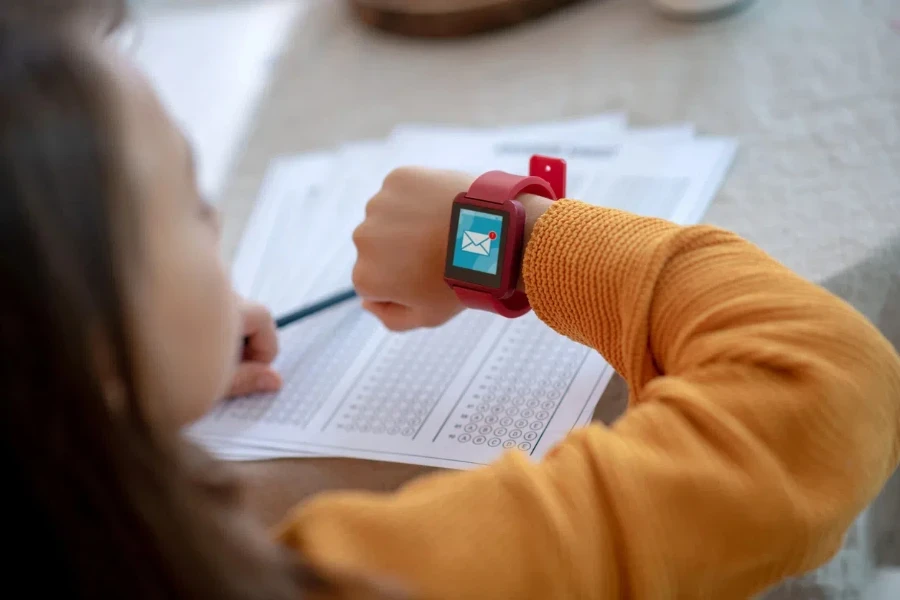In an era where technology intertwines with daily life, ensuring the safety of our children has taken a new turn with the advent of kids GPS watches. These devices are not just a piece of wearable technology; they are a parent’s ally in keeping track of their children’s whereabouts. This guide will dive deep into what a kids GPS watch is, how it works, its benefits and drawbacks, and how to select and use one effectively.
Table of Contents:
– What is a kids GPS watch?
– How does a kids GPS watch work?
– Benefits and drawbacks of a kids GPS watch
– How to choose a kids GPS watch
– How to use a kids GPS watch
What is a kids GPS watch?

A kids GPS watch is a wearable device designed specifically for children, equipped with GPS (Global Positioning System) technology to track the wearer’s location. Beyond simple location tracking, these watches often come with a variety of features aimed at enhancing child safety and parental peace of mind, such as geofencing, SOS buttons, and communication capabilities. They are designed to be durable, water-resistant, and easy for children to use, making them an ideal tool for parents to monitor their children’s whereabouts.
Unlike traditional watches, kids GPS watches are integrated with sophisticated technology that allows for real-time location monitoring. They are usually paired with a smartphone app, enabling parents to see their child’s location on a map. This feature is invaluable in ensuring a child’s safety, especially in crowded places or if the child has a tendency to wander off. The design and functionality of these watches cater to children, with colorful and durable materials, straightforward interfaces, and features that appeal to both parents and kids.
The evolution of kids GPS watches has seen the incorporation of features like fitness tracking, educational games, and even voice messaging. These added functionalities not only make the watch more appealing to children but also contribute to its utility as a tool for child safety and communication. By offering a blend of safety features and engaging applications, kids GPS watches have become a popular choice for parents looking to safeguard their children in the digital age.
How does a kids GPS watch work?

At its core, a kids GPS watch utilizes the Global Positioning System (GPS) to determine the wearer’s precise location. This system relies on a network of satellites orbiting the Earth, which send signals to the device to calculate its position based on timing and distance measurements. The watch then communicates this information to a linked smartphone app, usually via cellular networks or Wi-Fi, allowing parents to monitor their child’s location in real-time.
To enhance accuracy and reliability, many kids GPS watches also incorporate additional technologies such as Wi-Fi positioning and LBS (Location-Based Services). Wi-Fi positioning uses the proximity to known Wi-Fi networks to fine-tune the device’s location, especially useful in indoor or urban environments where GPS signals may be weak or obstructed. LBS, on the other hand, utilizes the cellular network’s towers to triangulate the device’s position, providing another layer of location accuracy.
The functionality of a kids GPS watch is facilitated by its built-in features designed for safety and communication. Geofencing, for example, allows parents to set predefined zones (like home, school, or a friend’s house) and receive alerts when their child enters or leaves these areas. SOS buttons enable children to instantly notify their parents in case of an emergency, sending out their location for a swift response. These features, combined with the device’s ability to maintain constant communication through calls and messages, make the kids GPS watch a comprehensive safety tool.
Benefits and drawbacks of a kids GPS watch

The primary benefit of a kids GPS watch is the enhanced safety and peace of mind it offers to parents. Knowing your child’s whereabouts at any given time, especially in today’s fast-paced and unpredictable world, is invaluable. The ability to set safe zones and receive instant alerts fosters a sense of security, allowing children more freedom to explore while giving parents control over their safety.
Moreover, these watches serve as a bridge for communication between parents and children. With features like voice messaging and SOS alerts, they facilitate immediate contact in situations where it might otherwise be difficult. This not only reinforces safety but also promotes a sense of independence for the child, knowing they can easily reach out to their parents when needed.
However, the use of kids GPS watches is not without its drawbacks. Privacy concerns are at the forefront, as constant location tracking raises questions about the child’s right to privacy and autonomy. Additionally, reliance on technology for safety may inadvertently decrease a child’s awareness of their surroundings and their ability to navigate risks independently. There is also the matter of technical reliability; GPS accuracy can vary, and devices can fail, potentially giving parents a false sense of security.
How to choose a kids GPS watch

Selecting the right kids GPS watch involves considering several key factors to ensure it meets both the child’s needs and the parent’s expectations. Firstly, evaluate the device’s tracking accuracy and reliability, as this is the cornerstone of its functionality. Look for watches that utilize multiple positioning systems (GPS, Wi-Fi, LBS) for enhanced accuracy.
Battery life is another critical consideration. A device that requires frequent charging may not be practical and could fail at crucial moments if not properly maintained. Opt for models with long-lasting batteries to ensure continuous monitoring. Additionally, assess the watch’s durability and water resistance, especially if your child is active or prone to accidents.
The range of features is also important. While basic models offer location tracking and SOS functions, more advanced devices include geofencing, two-way communication, and even educational games. Consider what features are most important for your child’s safety and well-being, as well as those that might enhance their interest in wearing the device.
How to use a kids GPS watch

Using a kids GPS watch effectively requires more than just putting the device on your child’s wrist. Begin by setting up the watch and its accompanying smartphone app according to the manufacturer’s instructions. This typically involves registering the device, installing the app on your phone, and syncing the two.
Educate your child on how to use the watch, especially the SOS feature and any communication functions it may have. It’s important for them to understand when and how to use these features in an emergency. Additionally, establish rules and expectations around the watch’s use, including when it should be worn and the importance of keeping it charged.
Regularly review the data and alerts from the watch to stay informed of your child’s activities and whereabouts. Use the app’s features to set safe zones and monitor their compliance with established boundaries. Remember, the goal is to ensure your child’s safety while fostering a sense of independence and trust.
Conclusion: A kids GPS watch offers a modern solution to an age-old concern—keeping our children safe. By understanding how these devices work, their benefits and limitations, and how to choose and use one effectively, parents can make informed decisions about incorporating this technology into their child’s life. With the right approach, a kids GPS watch can be a valuable tool in safeguarding our children while allowing them the freedom to explore the world around them.




